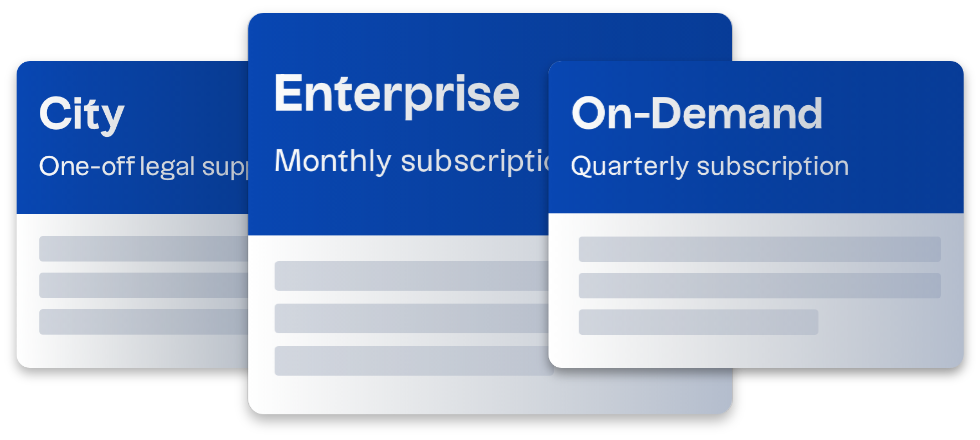Over recent years, and especially since the COVID-19 pandemic, entrepreneurs looking for a quick exit have converted their businesses to Employee Ownership Trusts rather than opting for an open market sale. Factors leading to this increase – the formation of EOTs almost doubled in 2022 – include the relative simplicity of the process combined with attractive tax advantages for both sellers and employees.
If you’re a UK business owner looking to sell, it’s possible to transfer your shares to an EOT and receive full market value for them without paying Capital Gains Tax on any gain. This not only benefits you, but also an EOT can be highly beneficial to employees who can receive a tax-free profit share each year.
In this article, we explore the ins and outs of EOTs: how to set one up, the pros and cons, and what rules you need to follow along the way. As a note of caution, we recommend you contact our specialist EOT solicitors if you feel an EOT may be right for you.
Jump to:
- What is an employee ownership trust and how does it work?
- What are the advantages of an employee ownership trust?
- What are the downsides of an employee ownership trust?
- If I sell my business to an Employee Ownership Trust, I am passing control of my business to the employees?
- If I choose to sell to an EOT, will I not receive a valuation as favourable as I would when selling to a third party?
- What are the tax implications of an employee ownership trust?
- How do you finance an employee ownership trust?
- How do you set up an employee ownership trust?
- How do I maintain an employee ownership trust?
- Are members of an employee ownership trust still employees?
- What’s the difference between a stock ownership trust and a share ownership trust?
What is an employee ownership trust and how does it work?
An employee ownership trust or EOT is a legally binding arrangement whereby individuals known as ‘trustees’ manage shares of a company on behalf of employees, known as ‘beneficiaries’ of the trust. An EOT is similar to an employee benefit trust that provides benefits to employees in the form of shares or share options.
An EOT can hold anything from 51% to 100% of a company’s shares, and the trust must benefit all employees on an equal basis.
The idea behind an EOT is that an entrepreneur wishing to sell their business without putting it on the open market can instead sell to its employees. Sometimes, the seller will remain involved in the business post-sale. The reason for pursuing an EOT are several; most significantly, there are tax advantages for both the seller and the employees. High-profile EOTs include Riverford organics, Richer Sounds and Go Ape.
What are the advantages of an employee ownership trust?
The principal advantage of an EOT from the standpoint of employees is that they benefit from receiving a share of the company’s profits, rather than just a salary. Also, since they are de facto owners of the company, benefits tend to be more generous than non-EOT companies, and there’s an annual £3,600 exemption from income tax on any profit share they receive each year.
EOTs tend to be more successful than ‘normal’ companies since employees feel more invested in the business and are likely to be more productive as a result. Management remains in place, and sickness/absenteeism reduces.
In addition, the sales process is less stressful than an open market sale to a third party.
For the seller, the sales process tends to be simpler, there are tax benefits such as the CGT exemption, and sellers who are emotionally invested in their business can see it go to a ‘friendly’ buyer. Sellers don’t have to market the business to potential sellers or go through a costly due diligence process with associated fees.
What are the downsides of an employee ownership trust?
An EOT isn’t for everyone.
One disadvantage is that it can be more difficult to find a bank to finance the purchase price, and as a result sellers get paid out over time from the business profits. One consequence of this is that profits are lower, so employees don’t benefit from profit shares for some time.
A related reason is that EOTs tend not to be suitable for high-value companies or those with fluctuating cash flow, as any loans need to be paid back from profits and repayments can be a drag on profitability. In addition, the sale will be at fair market value – a disadvantage for sellers who may achieve a better price on the open market.
Despite the CGT exemption, if the company fails to meet the HMRC conditions for an EOT following the sale, this exemption can be lost, and the tax clawed back from the selling shareholders. Finally, as the trust will be run by trustees, sellers need to pick these individuals carefully as they’ll be significant figures in the business.
If I sell my business to an Employee Ownership Trust, I am passing control of my business to the employees?
You won’t pass control over. Upon a controlling share sale to an Employee Ownership Trust (EOT), the EOT trustees become majority shareholders, with standard board control powers.
Their primary duty is to manage the trust property (the EOT company's shares) in the best interests of employees, the beneficiaries.
The Board retains responsibility for the company's management, and there's no mandate to change the Board composition, though this can be an opportunity for new appointments.
In summary, while EOT sales align member and employee interests, employees have an indirect interest as EOT beneficiaries.
If I choose to sell to an EOT, will I not receive a valuation as favourable as I would when selling to a third party?
A sale to an EOT is considered a transaction at market value, and it's crucial to have an independent valuation to support the transaction. This is significant for both the trustee and the company, as it demonstrates that the agreed sale value aligns with a fair, arms-length negotiated transaction value.
From the seller's perspective, this valuation is also vital for tax purposes, ensuring that the company is not overvalued and that the seller can fully benefit from capital gains tax relief for EOT sales. If less than 100% of the equity is sold to the EOT, it's essential to evaluate whether any minority discounts to the valuation are appropriate.
What are the tax implications of an employee ownership trust?
The biggest benefit of an EOT is the CGT exemption for the selling shareholder. As an example, if a shareholder sells their company and makes a £1,000,000 gain, they could save up to £200,000 in tax at current (2023) CGT rates.
In addition, each employee can receive up to £3,600 each year free of income tax, although they’d still need to pay national insurance.
There are numerous conditions for EOT tax relief:
- Your company must be a trading company – that means it’s a commercial company selling goods or services for a profit – investment companies don’t qualify
- You need to have a commercial reason for the sale
- You need to sell at least 50.1% of the shares, i.e. a controlling interest
- The shares need to be ordinary shares, and each share be held by employees on equal terms
- The trustees must maintain a controlling interest
- After the sale, the sellers who are directors and shareholders can’t comprise more than 40% of the total number of company employees
- A shareholder can’t hold more than 5% of the shares
Before you set up an EOT, you’ll need to get clearance from HMRC. This typically takes around a month to six weeks. Before you go for clearance, you’ll need to get the company valued, decide on the trustee, arrange funding and determine the percentage of shares to be sold.
We’d advise you to get an independent valuation and make sure your financial projections post-sale leave plenty of room for loan repayments.
How do you finance an employee ownership trust?
Either you can get a bank loan to buy the company shares, or the payment can be made in instalments from the company profits.
If you borrow to fund an EOT sale, there will be interest to pay on the loans, so you’ll need to make sure there will be sufficient profits to fund repayments of capital plus interest. The repayment schedule is likely to be five to ten years, and the EOT will pay profits into the trust to make the loan repayments.
How do you set up an employee ownership trust?
An EOT normally takes around six months to set up. Unlike with a sale to a third party who’s new to the business, this time will be spent organising a valuation and dealing with HMRC rather than due diligence and preparing documents. This is because the seller and the employees are already familiar with the business and the documents will be shorter and less complex.
You may decide to combine your EOT with an incentive scheme for employees, and this can provide additional tax and other benefits for directors and staff.
You’ll need to think carefully about who the trustees will be. Avoid having employees or directors as trustees as there’s the potential for a conflict of interest.
How do I maintain an employee ownership trust?
After the sale, the business will carry on much as before, except that the company will be administered by the trustee rather than the selling shareholder. This is why you need to pick your trustees carefully so that they consider the needs of employees and have enough experience to run a company property.
Usually, the trustees are a blend of employees, professional advisors and representatives of the seller. Their main role is to make sure the profit-sharing policy works, the loan is repaid and the company is meeting its financial covenants. They’ll also oversee the role of directors.
Are members of an employee ownership trust still employees?
After a sale to an EOT, the status of employees remains unchanged – they will still be employees.
What’s the difference between a stock ownership trust and a share ownership trust?
None – a stock ownership trust is the US term for a share ownership trust.
For more answers to commonly asked questions and advice on employee ownership trusts, consult our specialist EOT solicitors. Get in touch on 0800 689 1700, email us at enquiries@harperjames.co.uk, or fill out the short form below with your enquiry.

